How to Save Green Bean Seeds
This post may contain affiliate links. Read my full disclosure here.
Green beans are one of our “must have” crops for the garden. Each year, we save green bean seeds for planting the next year.
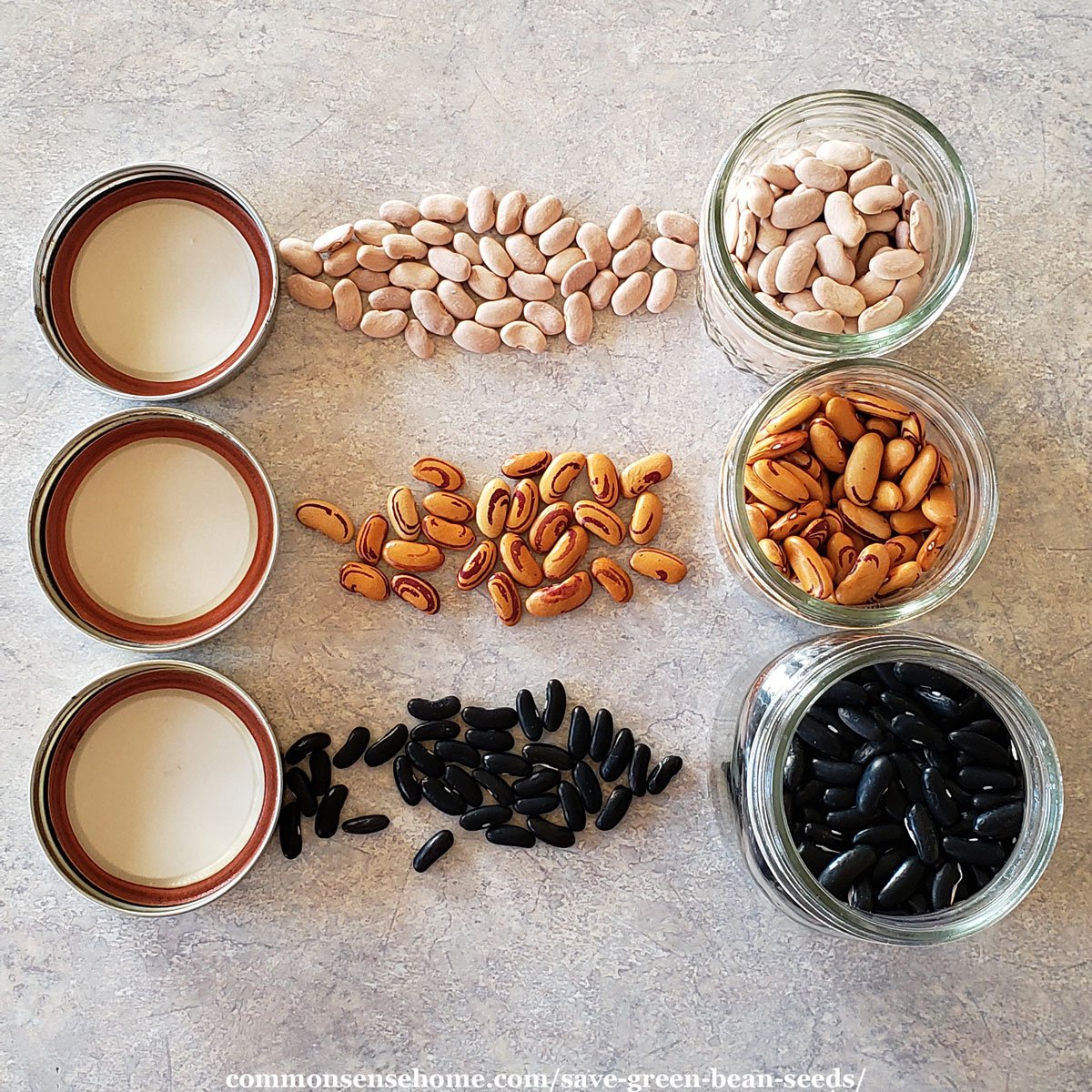
Seed saving helps us breed bean plants that are adapted to our local conditions. It also helps to maintain heirloom varieties, save money, and preserve biodiversity. Saving bean seeds is easy, but there are few things you need to know.
How to Save Green Bean Seeds
Green beans are also known as snap beans or string beans. These seed saving instructions work for all different types of beans.
To help maintain a strong gene pool, save seed from at least 30 plants. This may be difficult in small gardens. You can get a wider gene pool by getting friends to grow the same variety and swapping seeds.
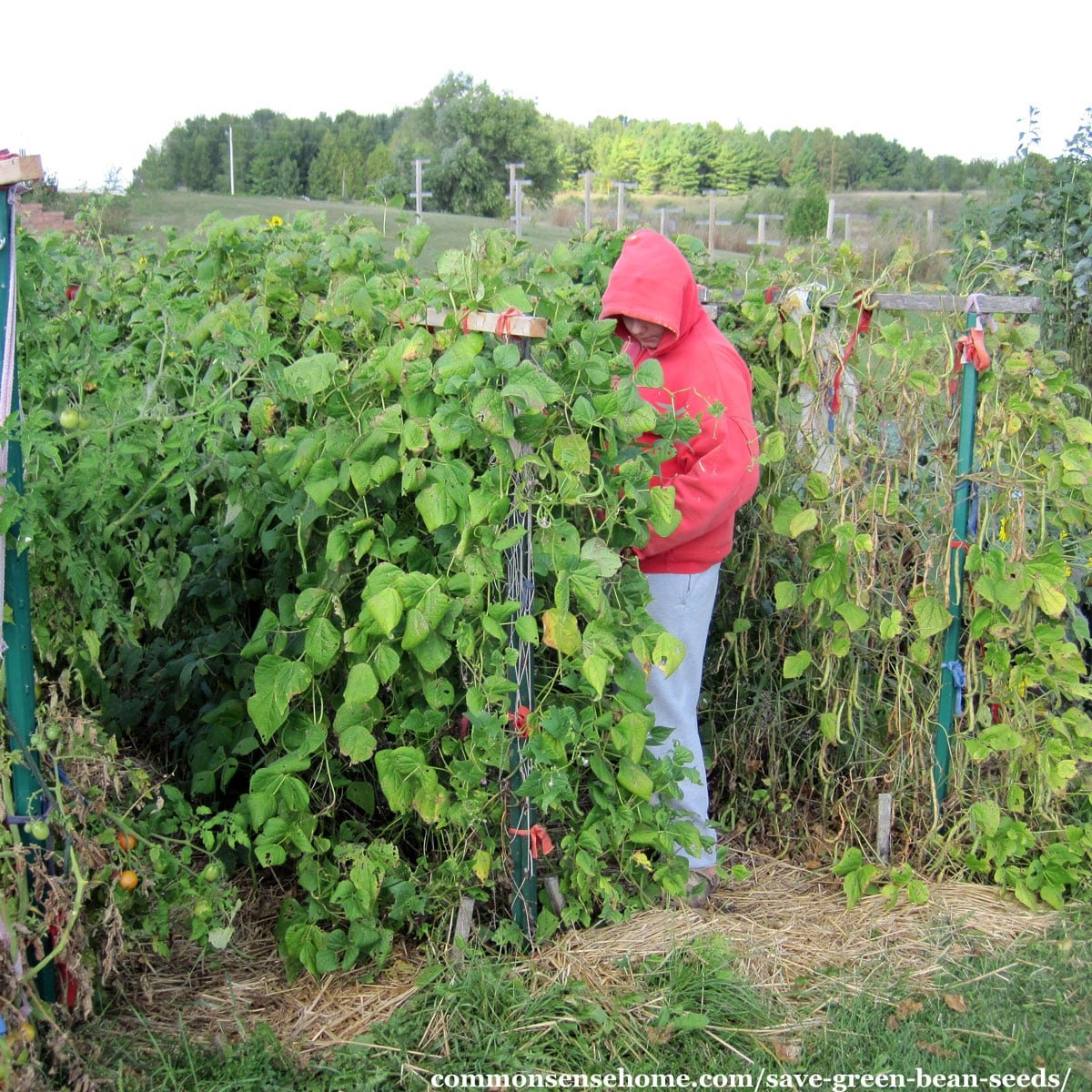
Select the Right Bean Varieties
Make sure to choose open pollinated or heirloom varieties of beans. These plants produce seeds that are “true to type” to the parent plant.
Hybrid seeds may revert to a parent type, or produce an entirely new variety. (If you want to experiment, this is fine.)
Maintain space between plantings
Beans are self-pollinating, but they can still cross pollinate if you plant different varieties too close together. I aim to keep different varieties of beans at least 10 feet apart. The Emerite pole beans stay away from the Tiger Eye shell beans.
See “How to Grow Pole Beans” and “Growing Shell Beans” to learn how to grow beans.
The good news is that different bean species don’t cross pollinate. For instance, you can grow runner beans (phaseolus coccineus) near bush beans (Phaseolus vulgaris), and they won’t cross.
Allow beans to fully mature
For viable seeds, you need to let the green bean pods mature on the plant until they are fully ripe. Harvesting too early may result in underdeveloped seeds.
Harvest bean seeds when pods to turn yellow, dry out, and become brittle. The beans inside should feel hard and have a noticeable rattle.
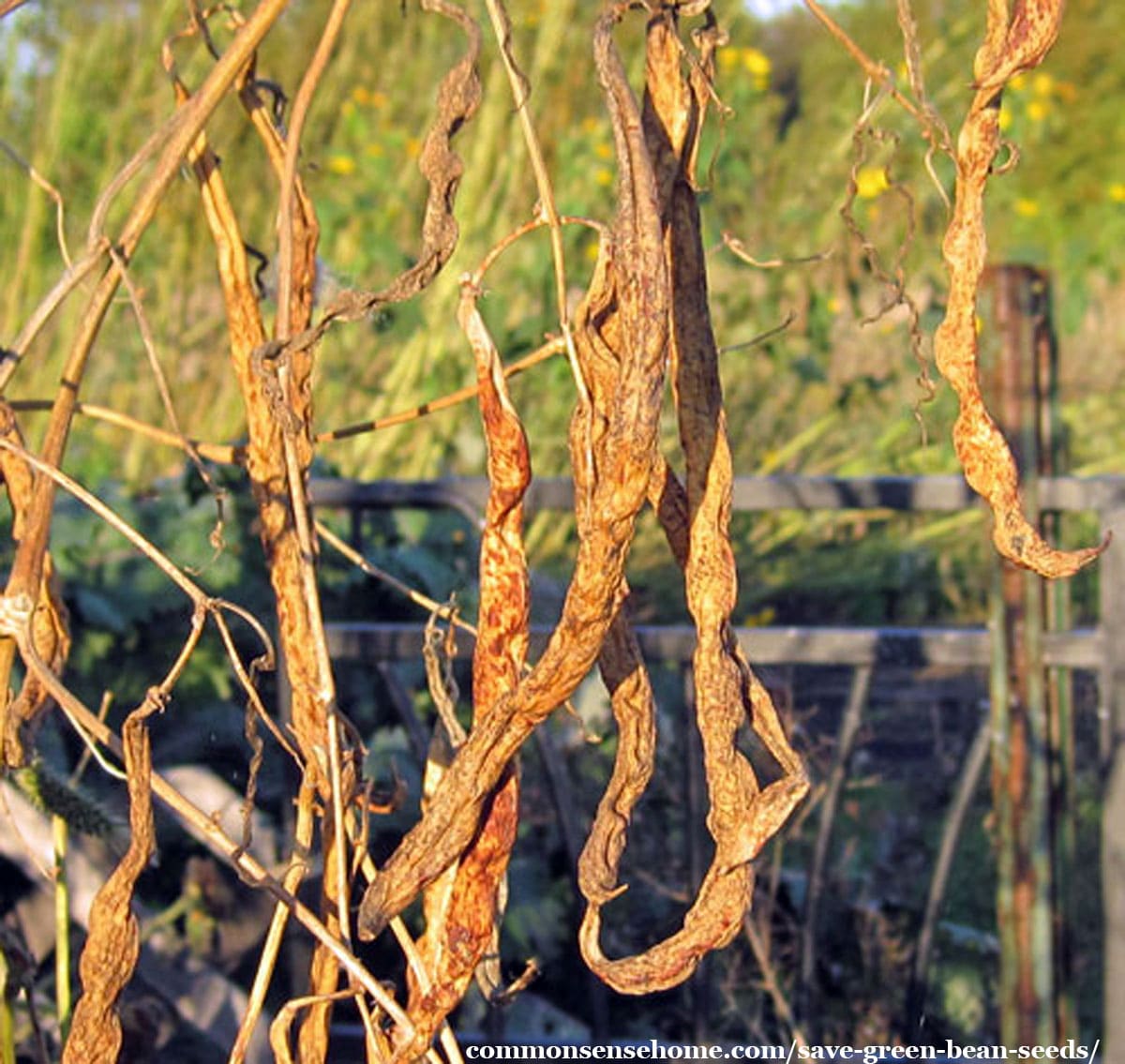
As a northern grower, my season is fairly short. If I want to save green bean seeds, I can’t pick the beans from the same plants I’m growing for seed. To solve this problem, we designate the end of a row for seed. That area is not harvested from during the season.
Southern growers might be able to pick once or twice before letting the beans mature for seed.
Would you like to save this?
Harvesting Green Bean Seeds
Harvest beans when the pods are fully mature and dry. Remove the dried bean pods from the plant and lay them out in a well-ventilated area. Let them continue to dry for another week or two.
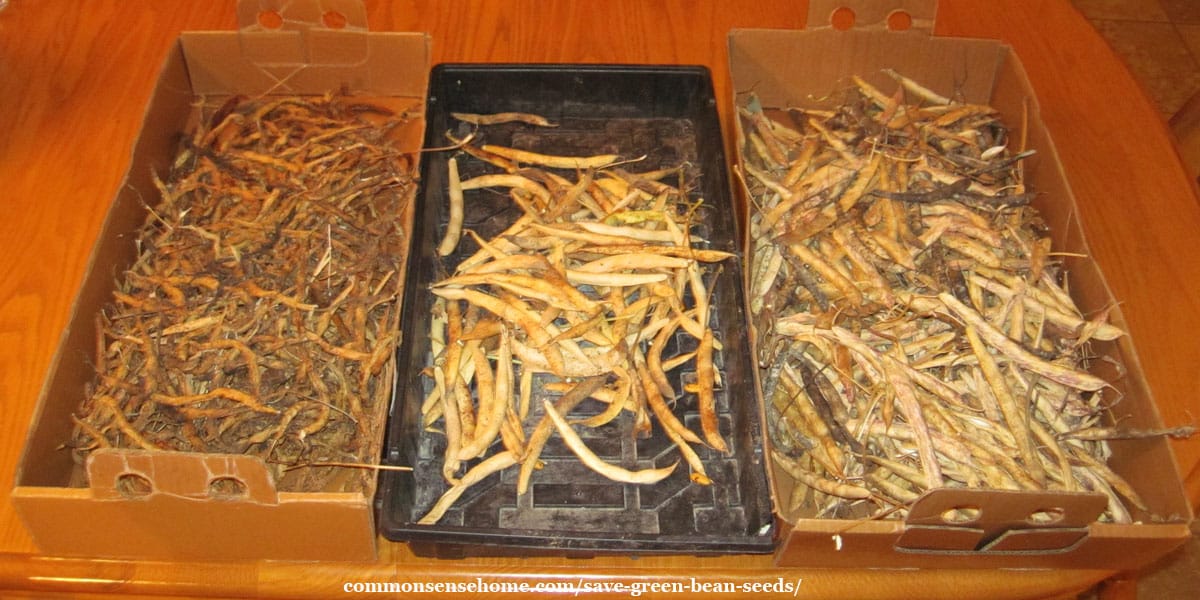
Gently break open the dry pods to release the seeds. Pick the bean seeds out of the pod debris, discarding any that are damaged or runty.
Cleaning and Removing Debris
If you want to clean the seeds further, you can use a simple winnowing technique. On a dry and windy day, pour the seeds from one container to another, allowing the breeze to carry away any lightweight debris. Alternatively, you can use a fine-mesh sieve to remove larger particles manually.
Drying and Storing Seeds
After cleaning, spread the green bean seeds on a flat surface and allow them to dry completely for about two weeks. Keep them well-ventilated and away from direct sunlight.
Make sure your seeds are completely dry before storage. I once ruined an entire jar of seeds with mold because a few seeds were damp.
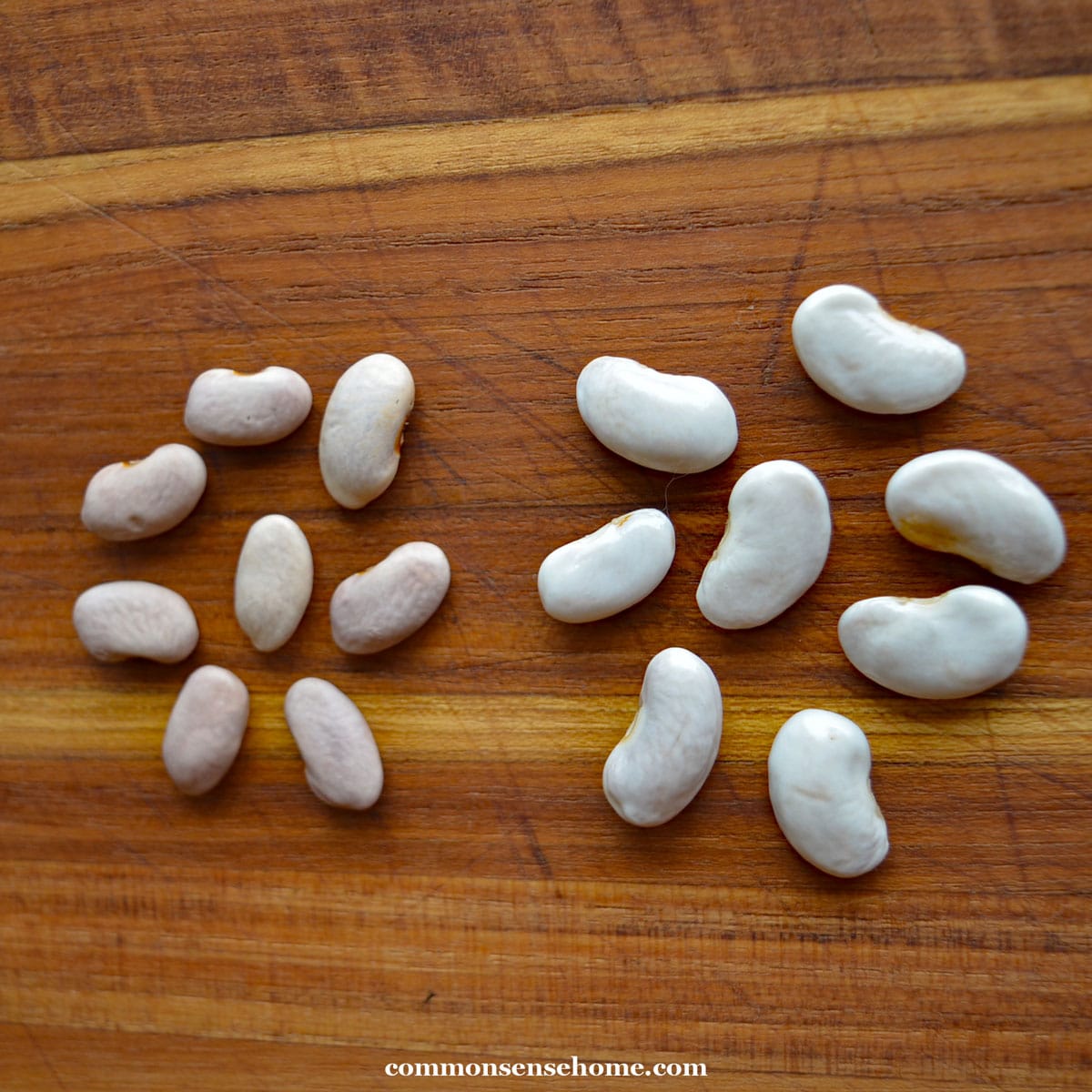
Once dry, store the seeds in airtight containers or envelopes in a cool, dark, and dry location. Label the containers with the variety and date the bean seeds were harvested. Bean seeds can be saved and stored for many years.
See “How to Store Seeds (for Next Year or Long Term)” for more on seed storage.
Seed Viability Testing
If you’re worried about whether or not your saved green bean seeds are good, try a simple germination test. Place a few seeds between damp paper towels and keep them warm. Check for sprouting after a week.
If the germination rate is low, get fresh seeds, or plant more seeds to compensate. Bean seeds are quite reliable for us, unless we made a big mistake, like not allowing them to dry properly.
Saving Bean Seeds is Easy!
Saving green bean seeds is a great first project for home seed savers. If you grow pole beans, you can grow a lot of plants in a small area for a wider gene pool. Bean seeds are great for seed swaps, because each plant produces a lot of seeds.
You don’t need to hand pollinate, or isolate flowers (as long as you keep varieties separated). You don’t need to wait until the next season for seeds like biennial veggies, or ferment the seeds.
I hope you’ll give seed saving a try in your garden!
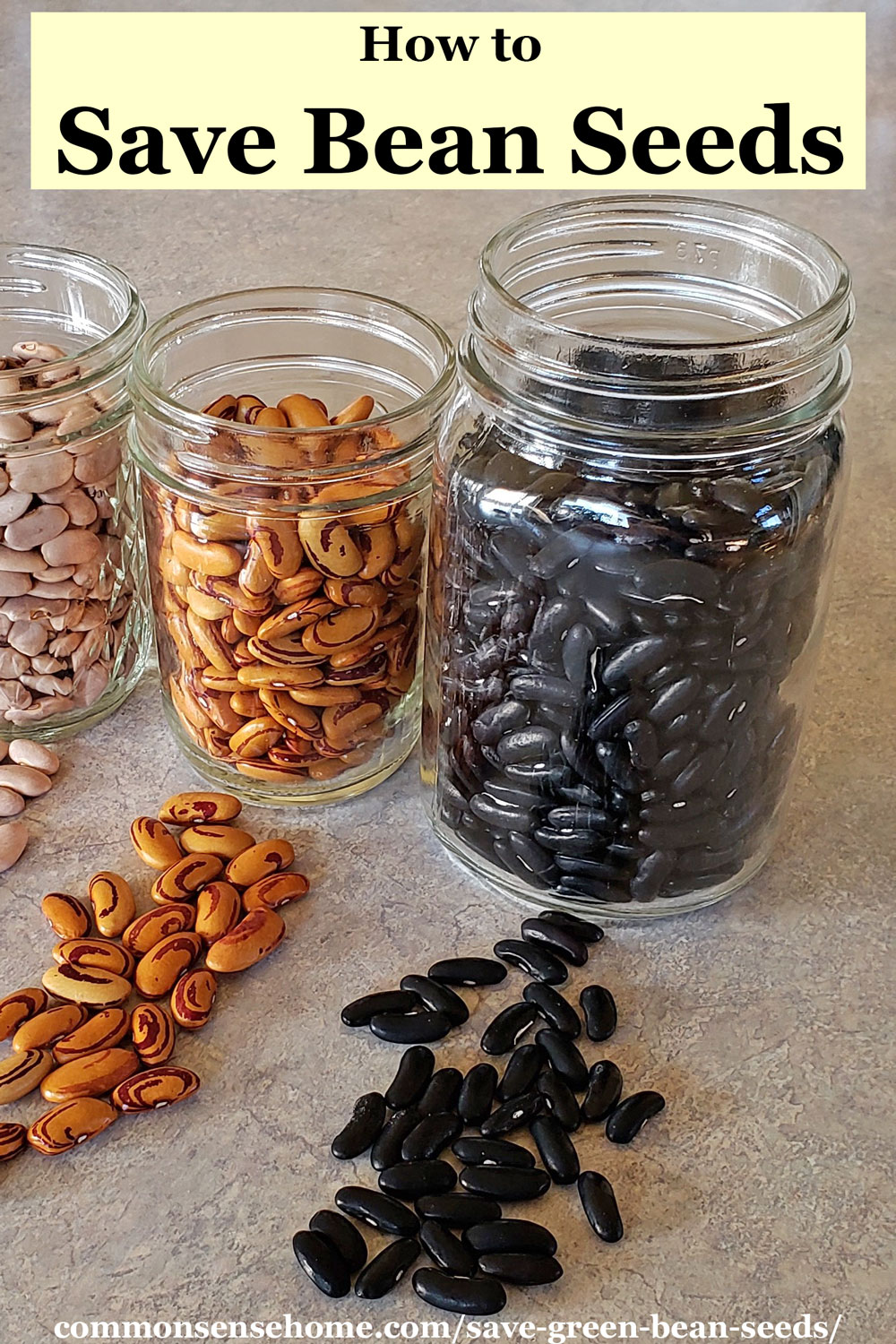

This article is written by Laurie Neverman. Laurie and her family have 35 acres in northeast Wisconsin where they grow dozens of varieties of fruiting trees, shrubs, brambles, and vines, along with an extensive annual garden. Along with her passion for growing nutrient dense food, she also enjoys ancient history, adorable ducks, and lifelong learning.

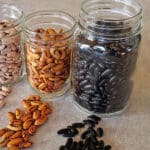
My beans frosted before they dried on the vine. Can I still use them to save?
Maybe. It depends on how far along they were and how deep the frost damage. I’d shell them and let them dry completely, and then do a germination test. If they’re not viable, you’ll need to try again next year, but at least you’ll know before it’s time to plant in spring.